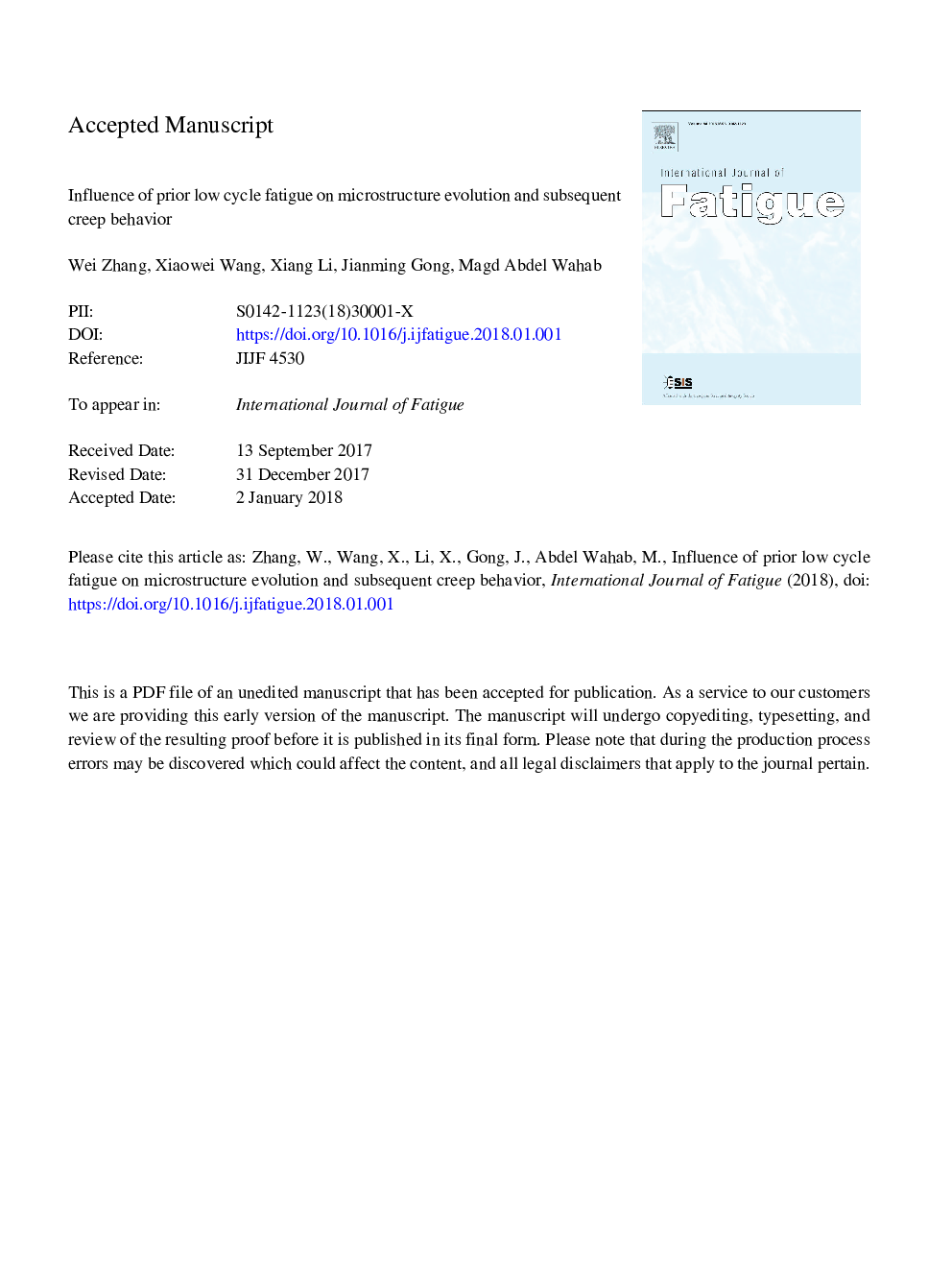| Article ID | Journal | Published Year | Pages | File Type |
|---|---|---|---|---|
| 7171581 | International Journal of Fatigue | 2018 | 33 Pages |
Abstract
This work is devoted to the study of the influence of prior low cycle fatigue (LCF) on microstructure evolution and subsequent creep behavior of P92 steel. Different strain amplitudes prior LCF tests ranging from 0.25% to 0.6% were performed at 650â¯Â°C with constant strain rate of 1.0â¯Ãâ¯10â3â¯sâ1 and thereafter subsequent creep tests were conducted at 130â¯MPa in the same temperature. Optical microscope (OM), scanning electron microscope (SEM) and transmission electron microscope (TEM) were utilized to clarify prior LCF damages of various strain amplitudes on subsequent creep behaviors. Results reveal that the increase of lifetime fraction and the increase of strain amplitude lead to the nonlinear degradation of subsequent creep properties. However, the degradation behavior shows a tendency to be saturated after 70% lifetime fraction or after 0.4% strain amplitude, respectively. The degradation is lifetime fraction and strain amplitude of prior LCF dependent. Further analysis of microstructure indicates that the degradation behavior is attributed to the different evolution behavior of martensite laths driven by cyclic deformation during prior LCF. Additionally, fractographs of creep failed specimens were analyzed in detail to correlate the different subsequent creep behaviors.
Keywords
Related Topics
Physical Sciences and Engineering
Engineering
Mechanical Engineering
Authors
Wei Zhang, Xiaowei Wang, Xiang Li, Jianming Gong, Magd Abdel Wahab,
